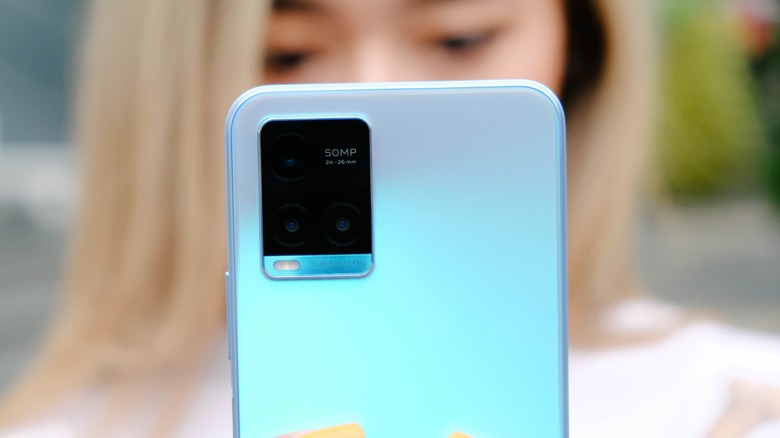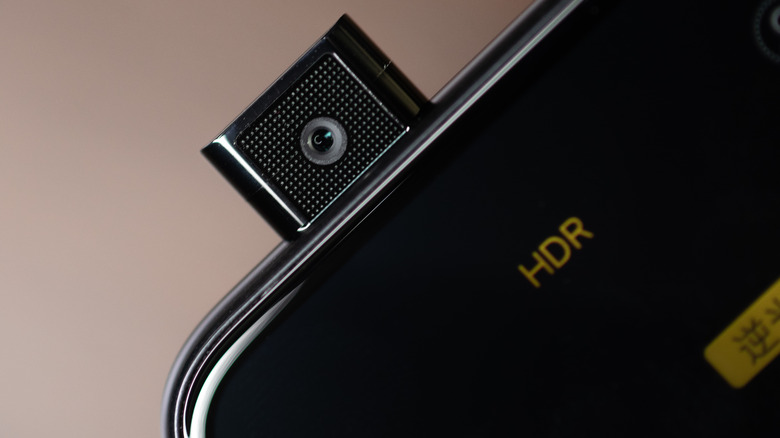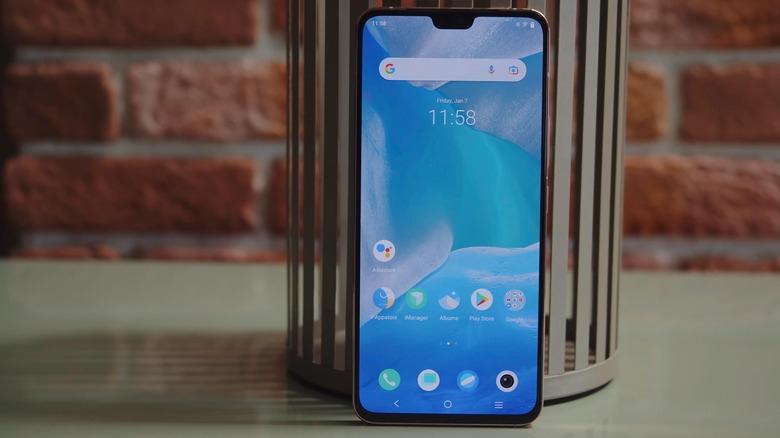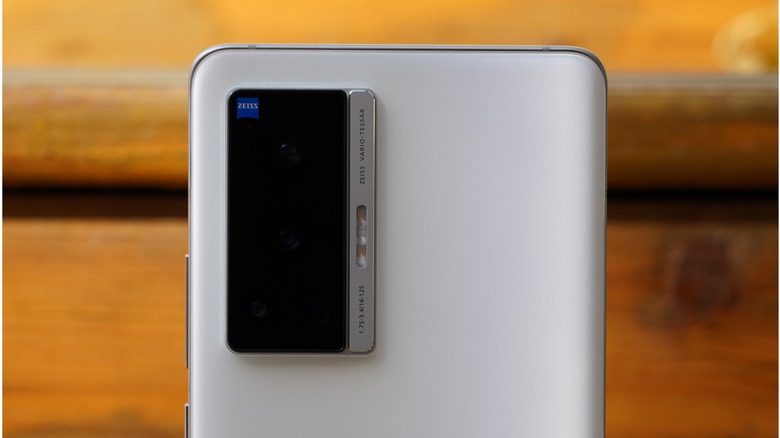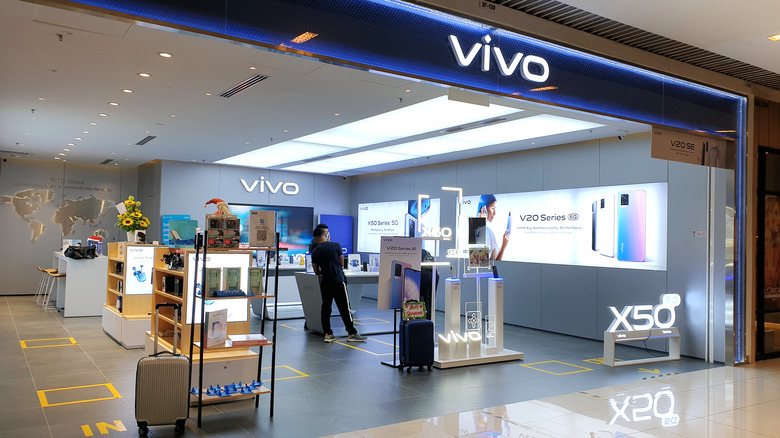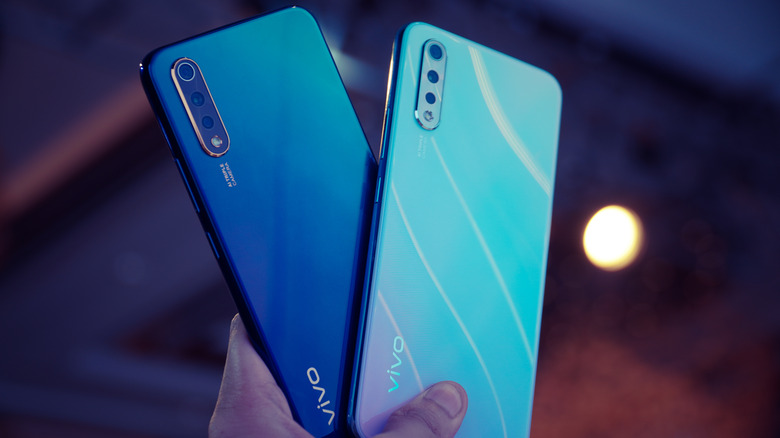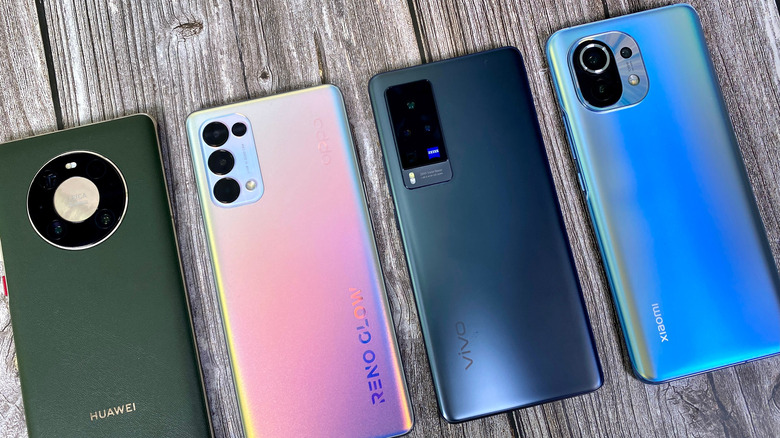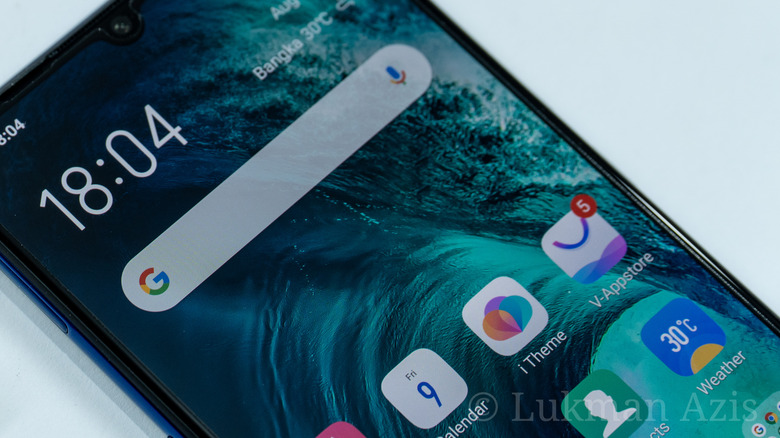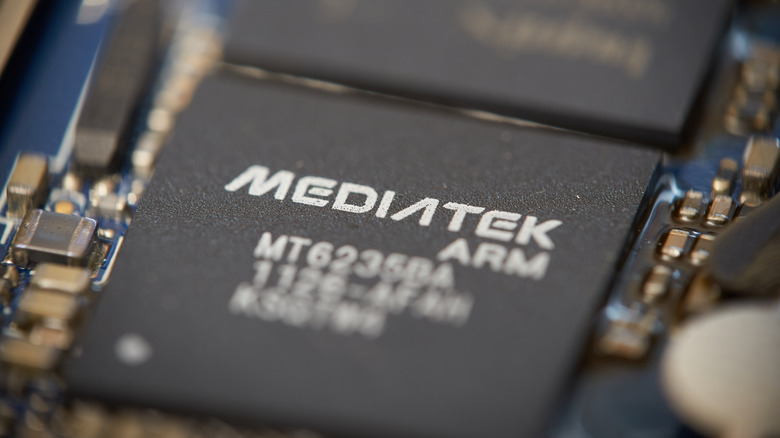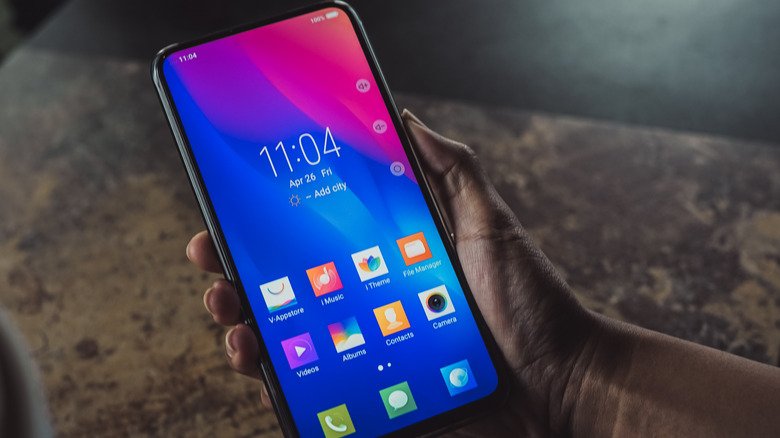The 5 Best And 5 Worst Things About Vivo Smartphones
The fast-paced smartphone industry has witnessed some amazing revolutions in the field of technology and features from various brands across the globe. While the Western world has played a key role in these advancements, major competition has been coming from the Chinese smartphone manufacturers. Vivo Communication Technology is one such company that has claimed the spotlight with its amazing innovations and high-spec devices.
Since its inception in 2009, Vivo has quickly expanded its business to more than 100 countries and has gone on to become one of the leading smartphone manufacturing companies around the world. While the brand initially focused on South Asia, by 2015, it had spread to other parts of its native continent and in 2020, launched European operations.
One of the biggest reasons behind the brand's success is the fact that it offers a wide range of specifications with price tags that do not burn a hole in your pocket. Although, not everything about the Chinese OEM is glittery and attractive. Just like other companies, there are some gray areas in Vivo, too, and just so you can balance out the equation better, here are the pros and cons covering all the major aspects of the brand to help you to make a better decision as to whether its phones are right for you.
Pro: Innovation
In a world that increasingly values technological advances, smartphones have become the new canvas for tech companies to portray their art. While there are many smartphone brands today that are competing for innovations, Vivo has proven to be successful in showcasing innovative designs and tech in its devices.
In 2018, the brand made headlines by launching the world's first in-display fingerprint scanner in its mid-range phone, the X20. The technology used high-resolution optical scanning done beneath the phone's glass display that could read the user's fingerprint and authenticate. It was a revolution in the smartphone industry that put Vivo in the spotlight, and for the cherry on the top, this move had already been tried by leading tech brands like Apple and Samsung, who failed to achieve similar results.
Another big new thing introduced by Vivo was the launch of its 'NEX' series — a smartphone lineup that featured one of the first bezel-less displays to offer an edge-to-edge design. To achieve this, Vivo had to think of a way to shift the front camera module from the front side, and to do so, it introduced the first mechanical pop-up camera design that leaves room for the bezel-less display. If that is not fascinating enough, in 2020, the brand revealed its design for the Apex 2020 — a concept phone that featured no camera module on the phone's body but a flying drone-like camera module that detached itself from the body.
Pro: Ultimate specs on a budget
Regardless of the selling price, every Vivo phone on the market today offers amazing specs and features that other brands offer only in their flagship series. As a matter of fact, the uniqueness of the company lies in its formula of packing high-end specs such as a big battery, lots of RAM, and high-quality camera modules, all at a competitive price.
For instance, Vivo's flagship NEX 3S offers the latest 5G technology combined with killer specs like an edge-to-edge Super AMOLED display (without a notch or camera cutout), a powerful Snapdragon 855 chipset with 12+ 256GB of memory setup, and a huge 4500 mAh battery with ultra-fast charging at 44W. The phone retails around $700, $300 less than the Samsung Galaxy S20 Ultra, its closest competitor.
Diving into the mid-range phone market, which ranges from around $299 to $399, Vivo has plenty of options that offer you great value for the money. The V23 in this segment is a prime example that packs 5G along with an OLED display, 8GB of RAM with 128GB of internal storage, and a triple camera setup at the back with a 64MP low-light lens (via GSM Arena). Even the phones that belong to Vivo's lowest-tier and max out at $200 equip at least 6GB of RAM, multi-camera setups, and fast-charging. So if you want some flagship-level specs in your next smartphone without burning a hole in your pocket, Vivo has got you covered.
Pro: Amazing Camera
The camera system in the smartphone industry has become one of the most significant features that buyers look for, according to Morning Consult. Vivo has not only recognized this fact but also made this the USP of its brand. Vivo phones are known for their outstanding camera setups and specifications and, for most of the part, it is true. Be it a flagship model in the company's lineup or a mid-range phone, you will get a camera module with multiple cameras and high specs.
For instance, The X70 Pro flagship offers a camera setup that has been applauded by many. Though it does not beat the flagship models offered by Apple or Samsung, it does give them tough competition. The main camera of the phone is a 50MP Samsung unit with f/1.57 aperture and optical image stabilization. The second camera is a wide-angle lens by Sony that is rated at 48MP with an f/2.2 aperture and Gimbal optical image stabilization. The lens can cover a 114-degree angle and has a 360-degree Horizon Leveling system. Moving further, you get a 12MP portrait camera with an f/1.6 aperture and finally, an 8MP telephoto lens with 5× optical zoom.
Even if you go down the lineup for a budget phone, Vivo still does not compromise on the camera and offers quite good specs. Like the Y30, which retails for around $250 and packs a quad-camera setup including an ultra-wide and macro lens.
Pro: Brand building
With some giants in the smartphone industry like Apple and Samsung having a significant history and brand value, penetrating into the global market is certainly not easy. This is particularly true in the US and European markets, where people are used to expensive and high-end products. Vivo knew that competing in these markets would not be easy and thus, chose a completely different market for branding itself.
The Chinese OEM saw potential in the South Asian market because firstly, there was a major vacuum in the market for a smartphone brand that could deliver flagship-level features in a more economical price range, and secondly, these markets were still not deeply influenced by Apple and Samsung because of their high selling costs. Since the world is rapidly becoming more digital, a smartphone which was once a luxury item has now become a necessity, and Vivo knew this before entering countries such as India, the Philippines, and Bhutan, which now administer the majority of Vivo's sales.
These countries are in the process of becoming developed nations and hence a vast majority of their population still cannot afford high-end phones. Vivo saw and grabbed the opportunity of offering phones that were high on specs but budget-friendly. That is why a majority of Vivo's lineup is constitutes of mid-range and low-tier phones. All this along with great marketing strategies helped Vivo to become one of the largest smartphone brands globally without even entering the western market.
Pro: Lots of options
Vivo has an extensive list of options for buyers to choose from, with smartphones ranging from $100 all the way up to $700 (via GSM Arena). With this much variety on offer, there is certainly a smartphone for everyone depending on the budget and specifications required. Especially in countries where a large section of the population can not afford high-end phones like Apple and Samsung flagships.
The Chinese OEM offers almost 100 models that are spread across eight diverse series. Starting with the U and Z series, which cover the most economical phones offered by the company. These phones equip decent specs like an HD display, 3GB of unified memory, and a battery pack that ranges anywhere between 40,00 to 5,000 mAh. You are likely to find a triple camera setup with decent photography. Image processing on these options is not so great, but considering the fact that these phones cost around just $150, it's tough to complain.
Diving into the mid-range section, we have the Y, S, and V series. Some of the best-selling phones offered by Vivo belong to these lineups, especially because of their competitive specs and economical pricing. Moving up, we have the X series — the flagship lineup of Vivo. This lineup offers the most advanced specs, great design and ultimate camera capabilities within a price tag that is still alot cheaper than the flagship models offered by giants like Apple or even OnePlus.
Con: Better rivals
Lots of people consider a brand's value and hype before making a purchase from it, and the same goes for the smartphone industry. While it is true that Vivo has succeeded at making noise in the market with effective marketing and shinning endorsements, for someone who is looking for more value for money and is not really interested in the hype, there are many brands out there which give Vivo a run when it comes to value.
Interestingly, Vivo is a part of BBK Electronics, which is a Chinese multinational conglomerate and also the parent company to most of its rivals such as Realme and Oppo. While Vivo's smartphone portfolio starts at $100, its counterpart Realme sells most of its phones under $200. For instance, the Realme 8, which retails for around $150, has a 5,000 mAh battery pack, 4+128 GB storage configurations, and a quad-cam setup at the rear with a 64MP primary camera (via GSM Arena).
For a person who is not a tech geek and not vested in the advancements of the smartphone industry, these specs are still quite healthy and offer more value for money than a Vivo phone. Vivo offers the same specs for which the person has to pay at least $100 more. The same is the case with Xiaomi, another Chinese OEM that rivals Vivo in the mid-range section and offers better specs at cheaper prices (via Tech Radar).
Con: Funtouch OS
Regardless of the amazing camera systems and fast chips, its software is still an area where Vivo lags behind. Currently, the brand's custom Android skin — known as the Funtouch OS — can be found on every Vivo device out there and the user experience of this software has not been good enough.
For starters, Funtouch OS has been heavily accused of copying certain aspects of Apple's iOS like the camera interface, notifications, and swipe-up control center panel (via The Verge). The inbuilt browser offered by the software has a cluttered user interface and is filled with unnecessary ads which make the user experience less attractive. Another issue with the browser is that it restricts the frame rate of the screen content to 60 fps. This makes the browsing experience lag even if the device's screen offers a refresh rate of 120Hz.
Another very bothersome feature about the software is the data collection warning points before the start of certain apps. Users have to agree to several license agreements about the collection of data like the IP address, GPS location, contacts list, and several other forms of data stored on the device. While its an ethical move to maintain transparency, the problem with it is that users can not launch certain apps such as the camera, the photo library, or the messaging system without signing to the agreement. So fundamentally, you do not get a choice in whether or not the company collects your data.
Con: Security issues
Security and breach of privacy are some of the major concerns involved with Chinese smartphone manufacturers and Vivo is no exception (via Council on Foreign Relations). The Chinese OEM heavily sources processors from Taiwanese chip manufacturing company MediaTek and in 2021, a major security issue was found present in these chipsets. According to a study conducted by the Israeli cybersecurity company Check Point Research, MediaTek chips have a digital audio processing unit that is vulnerable to malicious software.
For a remote attack to work, a hacker would need to plant malware on the audio unit of the chip which in turn could write malicious codes throughout the device by exploiting the way the chip works. This could easily allow the potential attacker to eavesdrop on the device user and steal data to a great extent, making all the Vivo devices that use chips from MediaTek vulnerable to snooping.
Slava Makkaveev, a researcher at the Israeli organization said, "MediaTek is known to be the most popular chip for mobile devices. Given its ubiquity in the world, we began to suspect that it could be used as an attack vector by potential hackers. We embarked on research into the technology, which led to the discovery of a chain of vulnerabilities that potentially could be used to reach and attack the audio processor of the chip from an Android application. Left unpatched, a hacker potentially could have exploited the vulnerabilities to listen in on conversations of Android users." (via Forbes).
Con: Bloatware
While most Chinese phone companies are trying to offer a bloatware-free experience to their users, Vivo seems to be on a completely different path. The Chinese OEM continues to load pre-installed software and apps that not only hamper the user experience with unnecessary applications but also kill a significant amount of disk space that otherwise could be utilized for better purposes. Moreover, things get crappier when you realize that these software and apps are system defaults and you can not uninstall a majority of them.
The list includes factory apps such as HotGames, Theme Store, VivoVoice, and Vivo I Manager, and are all sourced and managed by the brand's own pre-loaded app store. Almost all these apps demand the users to sign to the user license agreement for data collection and since none of these apps are from Google PlayStore, the updates are carried out by the firm itself. Privacy remains the fundamental question, considering no necessary security checks are done as prescribed by Google Play, even after these devices claim to carry the branding of Google Play Protection.
Con: Controversies
In 2020, Vivo was surrounded by dark clouds of suspicion when the brand was found to have sold more than 13,500 devices in India with an identical IMEI number (via Indian Express). IMEI stands for International Mobile Equipment Identity — a 15-digit number unique to every phone. The sole purpose of the number is to distinguish between various devices and to track down any phone in case of theft, emergency, or potential threats (via Android Authority).
No two devices should have the same IMEI number as it makes it really difficult for the authorities to track them in the necessary scenarios. A Cyber Cell unit in Meerut, India reportedly found more than 13,000 Vivo devices running on the same IMEI number, which is a serious issue. As noted in the Indian Express article, a case was brought against the phone manufacturer in 2020 and Vivo India's administration was sent a formal notice, though no clear statement on the matter has yet been passed by the company. The lack of accountability on such issues definitely puts a bad light on the brand and its reputation.
